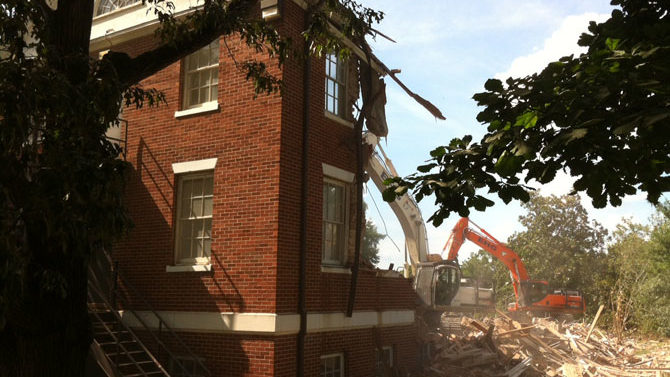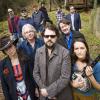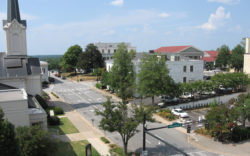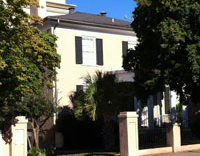A while back, I wrote about the potential for “Occupy”-inspired patterns of ownership to alter our patterns of consumption and, ultimately, our built environment. The Occupy movement had put out a call for people to move their money from big corporate banks to member-owned credit unions. Financial services aren’t the only corporate products we consume, though, and there are already many models, from electric memberships to community-supported agriculture and from co-housing to carpooling, that would enable a substantial shift to community-driven infrastructure that is perhaps more environmentally and socially responsible.
The phrase “form follows finance†comes to mind as a suitable reworking of the old architectural axiom. It was the title of Carol Willis’ book on the evolution of skyscrapers in New York and Chicago, which she characterized as distinct “vernaculars of capitalism.†Indeed, much of the landscape of sprawl around us is virtually untouched by professional architecture and design as we usually think of it. It is a vernacular landscape, but its defining features aren’t based on the use of local materials or response to climate, as we traditionally define vernacular. The key factor is in fact finance, with banks providing the necessary capital almost exclusively for the most conservative modes of development, producing the residential subdivisions and commercial strips we know today. Return on investment, rather than utility of the spaces created, is the goal.
New Urbanism pioneer Andrés Duany, in his recent lecture about “Agrarian Urbanism†at the University of Georgia, hinted at this issue. And indeed the role that finance plays has uniquely defined New Urbanism as an approach to sustainability. Critics have often taken the planning philosophy to task for its perpetuation of typical greenfield development—suggesting that it’s simply a small-town skin on the same old, bad development—but that’s precisely the point. New Urbanism heads towards sustainability by attempting to make the typical real estate transactions more sustainable by tweaking design without altering the fundamental nature of those transactions, instead embracing the existing world of finance to propel new ideas forward. Duany’s book on Agrarian Urbanism, which proposes a landscape of homegrown food production as a path towards resilience, is very explicit in its desire to make that planning approach the 20th real estate product, to supplement the 19 standard ones that define development today.
Another example that comes to mind is Christopher Alexander’s “Oregon Experiment,†an attempt to implement his egalitarian “Pattern Language†approach in the master plan of the University of Oregon. Pattern Languages consist of various ideas about spaces and relationships in the built environment, which become essentially a menu of potential strategies that combine to produce truly comfortable spaces for people. The experiment, Alexander noted, more or less failed in one big way. He thought that what the campus needed was a program of small interventions and repairs, defined by faculty, students and other users. The way campus buildings are funded, though, is by acts of the state Legislature, and so they tend to be large, monolithic projects.
The effects of finance on the University of Georgia campus are quite similar, not only due to massive structures like the Student Learning Center, but also to the machinations of the UGA Real Estate Foundation. Rutherford Hall, currently being demolished, just didn’t fit into that organization’s approach to issuing bonds for parking decks and dormitories; tearing it down to build a new one does.
If we go farther than Duany, and make a serious attempt to take control of the building of our communities away from the bankers and real estate professionals, what might that look like? Scale would be smaller; buildings would grow more incrementally, with additions and repairs over time. Areas would become more eclectic due to the distinct tastes of many agents, rather than reflecting assumptions about what will be most acceptable to as many potential customers as possible. At least in commercial areas, things might start to look like downtown Athens.
This is the crucial way in which projects like Selig’s plans for a Walmart-anchored outdoor mall downtown will always fail. Form follows finance, and the key feature of successful Main Streets like Clayton Street and College Avenue is that they are created by hundreds and thousands of different small transactions over time. They can’t be made in one fell swoop, with one builder, one architect and one loan. That’s how malls are built, and so long as Selig manages what it builds as a mall, that’s all it can ever be.
The question this raises in my mind is what all those alternatives—the co-ops, co-housing, EMCs and community-driven projects—might have the potential to produce. I don’t know what a world driven by that kind of finance might look like, but it certainly seems like the priorities that would necessarily drive building with that kind of approach are fundamentally different from the profit motivations that have produced our current environment.
Like what you just read? Support Flagpole by making a donation today. Every dollar you give helps fund our ongoing mission to provide Athens with quality, independent journalism.










